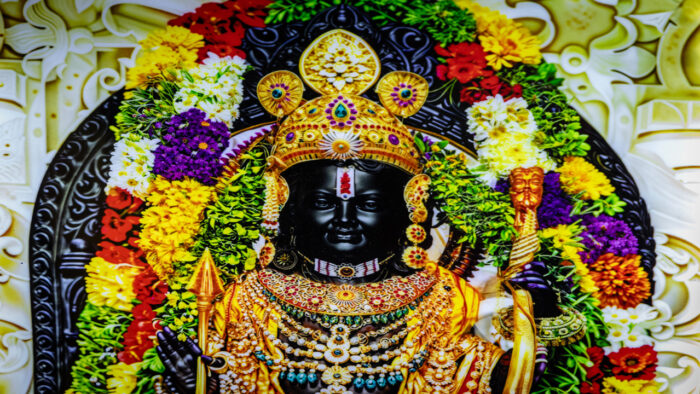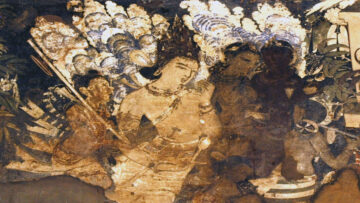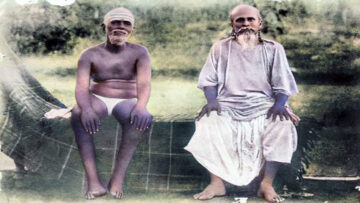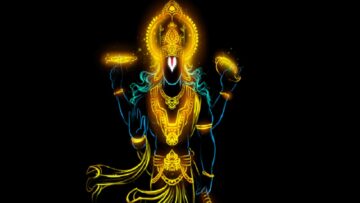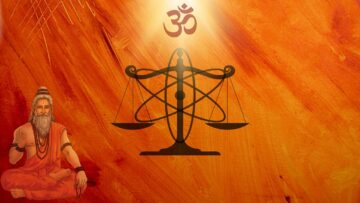Just around the time I had started attending primary school, an elder cousin had gifted me a copy of the English rendering of the Rāmāyaṇa by C Rajagopalachari (Rajaji) published by Bhavans Book University. Incidentally, the book was then in its 25th edition, which was also the Rajaji centenary edition. As a gift to a child who had just begun to read, the book was perhaps intended to be there in advance for the child to pick up on becoming able to read. It turned out to be the first book without pictures in English (or any other language!) that I read, for the first time at around age eight, and for more times than I have kept count of in the decades thereafter. The Rāmāyaṇa had begun to come alive for me through this print book even before being exposed to activities more common for children of the time, such as reading the Amar Chitra Katha version, or singing along the Nāmarāmāyaṇam with a cassette recording, all of which to me became accompaniment rather than alternatives to Rajaji’s book.
In the opening chapter titled ‘The Conception’ itself, Rajaji shows Ayodhyā to the readers from the place they stand in right now, rather than as a place accessible only through time-travel and a suspension of disbelief. On the yāga performed by Daśaratha for the blessing of progeny, Rajaji writes “In short, yaagas in those days were something like our present-day State-sponsored big-scale conferences and exhibitions.” At the time I was reading the chapter as an eight-year-old, the talk of Ayodhya in the neighbourhood and throughout the nation was more a matter of newspaper headlines than of some distant past, as the Ram Janmabhoomi movement had reached a climax. Whether it is the same Ayodhya in Rajaji’s book and the newspaper headlines is a question that spurred much inquiry and personal discovery during my growing-up years thereafter. It may be no exaggeration to say that the story of our growing up as a nation itself, is the story of how we learn to relate these apparently two different Ayodhyas in a way that is life-affirming for all, by combining honest awareness with earnest intent.
As a schoolboy for whom it is the bow-and-arrow portions of the Rāmāyaṇa that were of most interest, I would often skip past the Ayodhyā-kāṇḍa chapters during my early readings of the book. Even then, a line from the chapter ‘To the forest’ stayed with me unforgettably, because I heard in it the voice of a concerned father that I could recognize from real life too. “Will he sleep on the bare ground with a stone or a log for a pillow?”, asks Daśaratha in anguish to Kaikeyī about Rāma. There is much talk and fervent effort in recent years of the need to “humanise” the epics. The feeling of shock as a child to see a stone being spoken of in the place of something as comforting as a pillow, itself to me began to make the Rāmāyaṇa very real and lived and felt. That one line sufficed to instil a sensitivity, which in exercises by grown-ups is attempted to be cultivated through conscious awareness of things less accessible to a child’s feeling than stones and pillows, such as “human weakness” and “human suffering” and “human compassion”. It also highlights for me the limitations of recent attempts to make children “better human beings” by exposing them early to histories of the oppressed and of oppressors, and of redressals of historical grievance. The mind of a child might learn more readily from just the mental image of a loved one having to make do with a stone for a pillow, all that is attempted to be taught by “curricularizing” empathy and inclusion. The line by Daśaratha would flash to mind throughout the decades, on hearing visitors returning from Ayodhyā with a feeling no different from Daśaratha’s when they saw “Ram lalla in a tent”.
Rajaji gives glimpses both of an Ayodhyā that is bereft of Rāma who is in a forest hut, corresponding to our times with “Ram lalla in a tent”, and an Ayodhyā blessed once more with Rāma’s presence. In the chapter ‘Bharata arrives’, Rajaji writes that “Ayodhya, the City of Splendour, was sunk in darkness and lamentation.” and that “The streets, houses and temples were bare and unadorned. The faces of the people looked drawn and famished.” The joy kindled and sustained even by the mere thought of Rāma’s return to Ayodhyā is also spoken of in the book in the chapter ‘Intrigue wasted’, where Rajaji writes “The city rejoiced in anticipation of Raama’s return, for all felt sure that nothing could resist the force of Bharata’s dutiful love.”. “The city of Ayodhya swam in a sea of joy”, writes Rajaji, of the moment when Rāma and Bharata met again at Ayodhyā. This was the line that flashed joyously to mind during that moment on 22nd January 2024 which feels apt to describe as the moment of revelation of how “Ayodhyā is India and India is Ayodhyā”.
“What next?” can be a question that will inevitably feel hard to do justice to after such a moment of a lifetime in our own times, after such a moment of fulfilment in the epic itself, and at the conclusion of a labour of love like Rajaji’s own retelling. “I feel like one awaking from a dream of joy”, writes Rajaji wistfully in the book’s Epilogue, on his feelings when his seventeen-month writing of the book was complete. In the same Epilogue, he has offered for readers some guidance on the matter of what to read next. “A word for children who read these chapters. I have told the story of the prince of Ayodhya mainly for your sake. Grown-up people may read Vaalmeeki or Kamban. Those who know to sing can render with joy the sweet songs on Raama given by Tyaagaraaja.” This is guidance that I have attempted to follow in humble degree and much fulfilment over the years, be it through recordings of discourses on the Vālmīki Rāmāyaṇa in Tamil by TS Balakrishna Shastrigal or broadcasts of Hindi discourses by Morari Bapu jī on the Rāmāyaṇa of Gosvāmī Tulasīdāsa. It is the advice of Rajaji that so many fellow-Indians intuitively and earnestly seem to have begun to now follow, of reading the works of the saint-poets in their own languages, and savouring offerings in the performing arts as well, through Śrī Rāma Rāga Sevā at Ayodhyā itself and in varied offerings throughout the length and breadth of Bhāratavarṣa.
Rajaji in the epilogue writes of his decision to conclude his retelling with the coronation of Rāma, without including subsequent episodes on which there has been much debate among scholars and commoners alike about how Rāma should have acted, besides debate on whether those episodes arose from popular sentiment or the other way round. He lets these matters rest by simply saying “All such inquiries take us to the feet of God transcending speech and thought.”. In saying so, Rajaji offers guidance that is relevant to us too, to concern ourselves not with our expectations from Śrī Rāma after His return to Ayodhyā, but with expectations of what we will be willing to offer ourselves. Of what is asked of us, Rajaji has written in the Āraṇyakāṇḍa portion itself. While describing the plight of Sītā in captivity in the chapter ‘Closely guarded’, he writes “May all men be, like Hanumaan, pure and heroic helpers of such suffering women!” In the chapter ‘A second father dies’, he writes “When we see any helpless person in danger or difficulty, let us think of Jataayu and with firm mind try to help regardless of circumstance.”. Along with counsel to cultivate refined awareness by immersing in the renderings of the Rāmāyaṇa by the saint-poets, we thus also find from Rajaji an exhortation to cultivate intent to do right whatever the odds may be. Intent may be expressed in the persistent faith of pilgrims who worshipped ceaselessly at Ayodhyā not only during the decades with “Ram lalla in a tent” but also during preceding centuries of persecution. Intent may also be expressed in the fond simple hope that a book like the Rāmāyaṇa in English by Rajaji given to a child who is as yet too young to read, will read it someday!
Feature Image Credit: istockphoto.com
Disclaimer: The opinions expressed in this article belong to the author. Indic Today is neither responsible nor liable for the accuracy, completeness, suitability, or validity of any information in the article.

